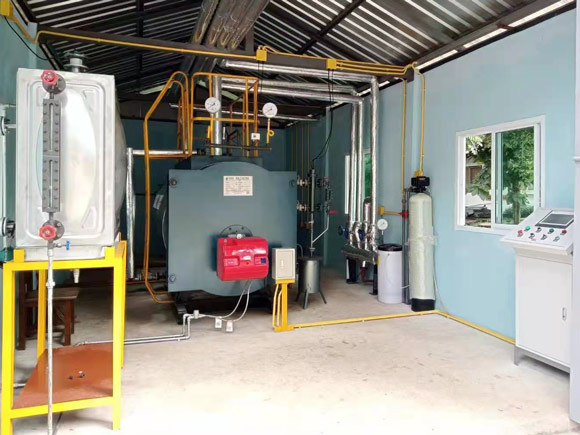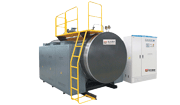- Home
- Products
 Oil Gas Boiler
Oil Gas Boiler
- WNS Series Liquid Fuel Oil Diese...
- Vertical Gas Lpg Diesel Hot Wate...
- SZS Series Double Drums Diesel G...
- Industrial Portable Skid-mounted...
- Waste Heat Recovery Steam Genera...
- Liquid Fuel Oil Bunker Diesel Oi...
- Liquid Fuel Waste Oil Bunker Oil...
- Gas Burner Boiler Natural Gas Lp...
- Oil Lpg Gas Hot Water Boiler
 Coal Boiler
Coal Boiler
- Industrial Coal Fired Boiler Sol...
- Vertical Coal Boiler Small Solid...
- SZL Series Water Tube Boiler Dou...
- DZH Sereis Coal Charcoal Briquet...
- Small Solid Fuel Coal Heating Bo...
- SHX/DHX Series Bubbling Fluidize...
- Briquette Coal Biomass Wood Hot ...
- Charcoal Wood Coal Hot Water Ste...
- Industrial Solid Fuel Water Heat...
 Thermal Oil Boiler
Thermal Oil Boiler
- Gas Lpg Diesel Fired Thermal Oil...
- Solid Fuel Coal Wood Biomass The...
- Electric Thermal Oil Heater Boil...
- YQL Vertical Diesel Gas Fired Th...
- YLW Series Horizontal Coal Therm...
- Edible Oil Heater For Fryer
- Waste Heat Recovery Thermal Oil ...
- YGL Seires Vertical Wood Biomass...
- Small Gas Thermal Oil Heater
- About us
- Services
- Case
- News
- Contact us

Importantance of Boiler Blowdown Water Systems & Control
16 / Oct
Importantance of Boiler Blowdown Water Systems & Control
What is boiler blowdown
Boiler blowdown is the removal of water from a boiler. Its purpose is to control boiler water parameters within prescribed limits to minimize scale, corrosion, carryover, and other specific problems. Blowdown is also used to remove suspended solids present in the system.
Regular sewage discharge and continuous sewage discharge
Boiler blowdown is divided into regular blowdown and continuous blowdown. The entrance of the continuous blowdown pipe is installed below the water surface of the steam drum and is arranged along the entire length of the steam drum to drain part of the boiler water continuously and uninterruptedly. The regular sewage discharge inlet is at the lowest part of the boiler where there is a lot of precipitated water and slag. Most of them are discharged from the lower header of the water wall. The discharge is done at a certain interval, mainly to release the water slag precipitated by the boiler water.
Phenomenon
The feed water entering the boiler drum contains a certain amount of salt. After the boiler is dosed, the scaling substances in the boiler water turn into slag; the water in the boiler will corrode the metal and produce some corrosion products; therefore, the drum It contains various soluble and insoluble impurities. During the operation of the boiler, only a small part of these impurities are taken away by the steam, and most of them remain in the pot water. As the pot water continues to evaporate, the concentration of these impurities gradually increases.
The feed water entering the boiler drum contains a certain amount of salt. After the boiler is dosed, the scaling substances in the boiler water turn into slag; the water in the boiler will corrode the metal and produce some corrosion products; therefore, the drum It contains various soluble and insoluble impurities. During the operation of the boiler, only a small part of these impurities are taken away by the steam, and most of them remain in the pot water. As the pot water continues to evaporate, the concentration of these impurities gradually increases.
Impact
Excessive concentration of impurities in the boiler water not only affects the steam quality, but also causes scaling and corrosion of the heating surface, affecting the safe operation of the boiler. In order to control the quality of pot water, boiler blowdown must be carried out to discharge part of the pot water contaminated by salt and water slag, and replenish it with clean water.

Excessive concentration of impurities in the boiler water not only affects the steam quality, but also causes scaling and corrosion of the heating surface, affecting the safe operation of the boiler. In order to control the quality of pot water, boiler blowdown must be carried out to discharge part of the pot water contaminated by salt and water slag, and replenish it with clean water.

Introductions
Boiler blowdown is divided into regular blowdown and continuous blowdown. The entrance of the continuous blowdown pipe is installed below the water surface of the steam drum and is arranged along the entire length of the steam drum to drain part of the boiler water continuously and uninterruptedly. The regular sewage discharge inlet is at the lowest part of the boiler where there is a lot of precipitated water and slag. Most of them are discharged from the lower header of the water wall. The discharge is done at a certain interval, mainly to release the water slag precipitated by the boiler water.
Any inquiry contact shirley@yuanda-boiler.com
Inquiry
Please feel free to submit your inquiry information to us. We will contact with you as soon as possible
Copyright © Henan Yuanda Boiler Corporation Ltd. All Rights Reserved Site Index
Privacy policy



 English
English


.png)